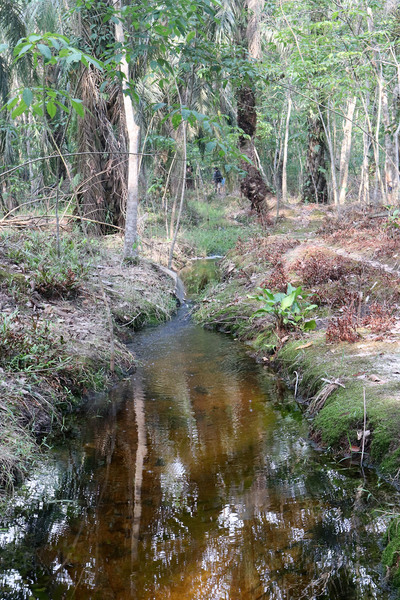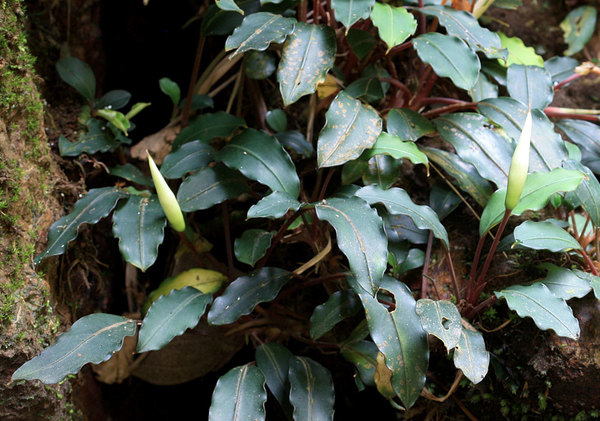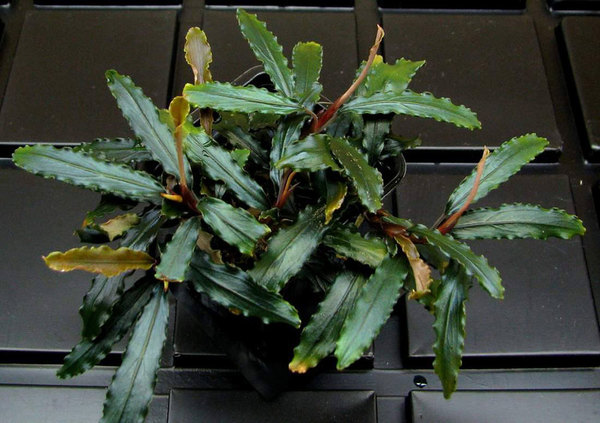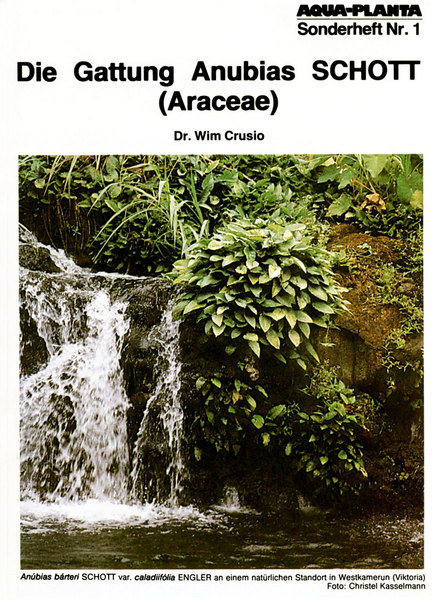English Edition
Phu Quoc Aroids a La Carte
It's no secret that a tourist can have different aims: to go on a beach holiday, to taste local food, to learn about culture or architecture. It depends on the individual preferences of the person. Today, I suggest using a new term - “aroid tourism”, which in fact I have been dealing with for several years, going on trips to tropical countries. As in the case with a restaurant menu, for each region I visit, I make my own “aroid card”. As a rule, it includes both endemics of the area and plants with a wider habitat. The latter can also have their own individuality due to the geological and climatic features of the region.
Today I’m trying to compile an "aroid card" of the Vietnamese island of Phu Quoc. It is very easy to do this for an area of just over five hundred square kilometers. It is enough to go to the tropical forest a couple times or to walk some kilometers along the bank of a small river. Aroids live in the tropics either along the river banks or in the shade under the canopy of the rainforest.
Easy Solution for Difficult Cryptocoryne Species
Fanciers of Cryptocoryne have a firsthand experience in challenges of keeping these plants from Malay Archipelago. Most part of Cryptocoryne from this region lives in Sumatra and Kalimantan, as well as small adjoining islands. The variety of species is huge. Today science knows more than five dozen species and subspecies of Cryptocoryne that have found their home on these islands. Almost all of them, with rare exceptions (Cryptocoryne ciliata, C. pontederiifolia, C. wongsoi and some others), live in small forest streams and rivers with very soft and acidic water (pH = 4-6; TDS = 5-40 ppm). At the same time, the water in the Moscow water supply system is close to neutral and contains by an order more hardness salts (pH = 7-7.5; TDS = 120-200 ppm). Given the sensitivity of Cryptocoryne to fluctuations in water parameters, considerable challenges come up in their maintenance. Some plants “melt down” within a few days after planting, while others stop growing and decay for a long time until they disappear completely.
Figure 1. A small creek with Cryptocoryne scurrilis on an hevea plantation in Sumatra (Riau Province). рН = 4.0, TDS = 25 ppm.
Today I will share my experience on how to keep soft-water Cryptocoryne species in your collection and enjoy watching these interesting plants every day.
The Specifics of Artificial Generative Propagation of Bucephalandra Schott
Bucephalandra plants are currently the most promising plants in the Araceae family for keeping in decorative home aquariums. The small size, a variety of shapes and colors, slow growth, the ability to grow on rocks and driftwood - all of these features are undeniable advantages of these Kalimantanian endemics. Along with it, Bucephalandra are highly susceptible to diseases. And most of these pathologies come with the plants which were collected in the wild. In the mountain streams of Kalimantan you will never find a completely healthy Bucephalandra (Fig. 1).
Figure 1. Bucephalandra bogneri S.Y. Wong & P.C. Boyce in the wild. Note that many leaves suffer from anthracnose of unknown etymology (“brown spots”). Photo: D. Loginov.
Due to the fact that most of the Bucephalandra plants in the modern zoo industry are imported from their natural habitats, aquarists who buy them are in a very difficult situation. However, it should be noted that these concerns relate in lesser degree to those who keep the plants in submerged conditions, as under water most of the pathogens do not develop. At the same time, the growing of Bucephalandra in paludariums is almost impossible without a number of quarantine and treatment measures.
Подробнее: The Specifics of Artificial Generative Propagation of Bucephalandra Schott
Bucephalandra: vegetative metamorphoses
You can believe in miracles or not, but sometimes they do happen. This axiom is consistently confirmed every year by wetland plants of the genus Bucephalandra. Only 5 or 7 years ago, they entered our aquariums, disturbing the steady life of the rest of the aquatic flora. Such traditional plants of the home tank as ferns, Anubias and Cryptocoryne got a serious competitor.
Bucephalandra is a genus of medium-sized rheophytic plants, which are endemic to fast mountain streams of Kalimantan. A huge variety of shapes and colors, as well as the flexibility to the growing conditions, allowed them to sink deep into the hearts of both, hobbyists and ordinary aquarists.
Figure1. Bucephalandra sordidula. Photo: S. Bodyagin.
It is gratifying that Bucephalandra did not stop there and continued expansion, constantly preparing new and new surprises for its admirers. We can attribute to such pleasant discoveries the recent description of 25 new species (the genus has currently 27 valid species), as well as the creation of an intergeneric hybrid between Aridarum caulescens M. Hotta & Bucephalandra bogneri S. Y. Wong & P. C. Boyce. The latter event is significant and unique: it is the first and only example of a successful intergeneric crossing within the family Araceae. In this article, we will continue to surprise our readers (and ourselves) and tell you about a recently discovered unusual type of vegetative propagation inherent in only one species - Bucephalandra sordidula S.Y. Wong & P.C. Boyce.
Anubias plants rotting: facts, rumours and guessworks
It is for the last few years that a ghost of Cryptocoryne disease has been wandering among Anubias plants fanciers. Almost every aquarist has come across the problem of the plants death soon after they have been purchased. Although it was only 15 years ago when the plants were compared with plastic models and thought to be of an ideal health. What may cause such a severe attack of disease? Though I don’t have any definite answer, I will readily share the guessworks and facts I’ve learnt with the reader.
To start with, I’d mention that I’ve already have to face several types of Anubias plants disease by my experience. The first type can be recognized when rhizome and leafstalk tissues become glassy quickly and die off within 2-3 days. As a rule, the disease is preceded by some abrupt changes of the plant conditions, such as delivering, replanting, undercooling or overheating. All this can be fully applied to Cryptocoryne plants. The only difference here is that the disease affects leaf tips tissues instead of rhizome ones. The rot of tissues may start due to poisoning with ammonia which is released during the plant respiration. Sometimes it results in a complete die-off. Yet I cannot say definitely whether it is caused simply by changing the plant conditions. Thinking about the cause, I recall an incident when several dozens of Anubias afzelii bushes were completely burnt by hot water due to a break in a water pipeline. The plants lost all their leaves, but soon recovered completely as their rhizomes survived. The entire state of the initial material may be of great importance. The better conditions Anubias plants have been grown in, the more tolerant they are to different factors.
Подробнее: Anubias plants rotting: facts, rumours and guessworks
Anubias afzelii blooming
Anubias afzelii is quite a big plant compared with other aquatic plants, as its mature specimen can grow up to a meter’s high. Aquarists prefer young plants to decorate their tanks. Such bushes grow very slowly when planted submerged and keep their small size for a long time. In the tank Anubias normally has not more than 5-7 leaves (the old ones die off, the new ones grow too slowly). It blooms also very seldom, as a rule only in a full-grown state, and when kept in a greenhouse. My plant started to bloom only in the 5th year. Its inflorescence is big and very beautiful, so these years of waiting were not spent for nothing. It’s worth seeing at least once!
Anubias gilletii – the pearl of paludarium
In my opinion Anubias gilletii is one of the most beautiful representatives of its genus. The laminae of this plant have a tribolate structure and are grown up horizontally to the surface on the long (up to 60 cm), graceful petioles. The rhizome is upto 1 cm in a cross section. The petioles are situated on it very closely to each other and are grown up to the light source. This picture looks like a beautiful bunch of cut flowers in vase. Small prickles on the petioles are looked like roses’ prickles. More than that Anubias gilletii has riotous flowering practically during the whole year. On my plant I could observe up to 7 inflorescences at the same time. Like most of the large anubias, the length of the flower stock is substantially smaller as the length of the petioles, so the flower ripens under the canapy.
Interview with Wim Crusio (author of Revision of Anubias)
The German aquarium magazine “Amazonas” (its Russian version) organized an interview with Prof. Dr. Wim Crusio, the author of the Anubias revision. The magazine’s redaction kindly granted us its permission to publish the interview. We express our thanks to the Russian “Amazonas”.
“Amazonas”: After having read Your Anubias genus revision (1979) i got an impression that in the first half of the last century botanists were very interested in these plants. In other words, there were collected plant samples, made up species descriptions, reconsidered previous descriptions. What is going on in this field now? Is "classical" botany out of fashion nowadays? Were there new Anubias species described in the scientific literature after release of Your revision?
Wim Crusio: No new species of Anubias have been described since my revision. I am not sure whether classical botany is out of fashion nowadays. I think that several factors play a role. We have nowadays much more collections available (and all of those are more easily accessible) than the late 19th/early 20th century botanists. So when we get a new collection, it is often immediately clear that it falls within the range of variation of an existing species. So whereas such a new collection might have been described as a new species 100 years ago, this is not the case now. Also, modern taxonomists often have a much broader species concept ("lumpers") than botanists 100 years ago ("splitters").
Подробнее: Interview with Wim Crusio (author of Revision of Anubias)








